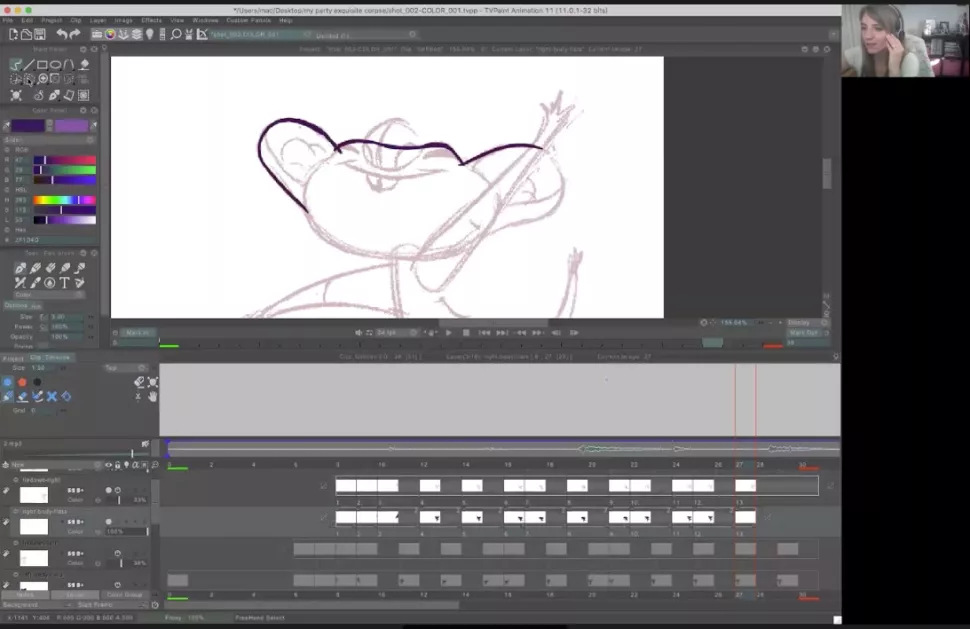How a Virtual Desktop Infrastructure Can Support Art and Design Students
Implementing a virtual desktop infrastructure can help keep creative juices flowing at art and design schools

While every college and university faces challenges in adjusting to the new normal and what a hybrid learning environment will look like for students, perhaps most unique is the state of art schools at which hands-on requirements are integral to learning.
We chat with Olga Stella of the College for Creative Studies in Detroit, Michigan, about how implementing a virtual desktop infrastructure is helping art and design students make the grade.
Sketching a New Plan
“We had a stay at home order that went into effect in March,” says Stella. “We had about a week to transition 1,400 students to online experiences so we could comply with the state's order to close campus. Our faculty pivoted to finish the semester strong virtually, but we're coming back 8/31 to campus with a more intentional plan using tech to keep students on track.”
The institution is a traditional art and design school, so in order to accommodate that necessary in-person experience, liberal arts classes are going fully online, while some other courses will be offered in a hybrid mode to reduce the density of people on campus.
“When you think about art and design there's a lot of hands-on making and creating of work,” says Stella. “We have studio classes that require equipment—a glassblowing studio, a wood shop—so scheduling allows us to maintain appropriate social distancing within those facilities.”
Staff is reconfiguring the physical footprints so the classrooms are bigger and can safely accommodate students. At times, faculty and teachers may move between more than one room in order to help support the students as they work.
Starting With a Blank Canvas
“What's exciting is that we've never really done online before, so there's a number of things the college has really invested in,” says Stella. “One of the things is bringing in expertise from a firm to rethink how some of these classes work, how we can think about them from a virtual first perspective and rework for a hybrid or online-only experience in the fall.
Tools and ideas to transform education. Sign up below.
The institution is implementing the Dell EMC VxRail Hyperconverged Infrastructure, a new infrastructure that allows for quick and seamless updates of all the software packages students use to create their work, such as 3D design and modeling packages.
“While students can download these programs, a lot of times their computers don't have the system requirements to run the software on the device itself,” says Stella. “By using the VxRail, we're basically expanding our computer lab into the students' homes or dorms or wherever they are working, thereby reducing density on campus (or in the physical computer lab) and making it as convenient and easy for the students to access tech, work on their projects, and do their classwork.”
Tech Provides the Palette
“I think people find it surprising at the amount of tech that is already used at design schools—a lot of the software packages are integral to creating the work,” says Stella. “Our students come from all different backgrounds, with potential inequality of resources when they are forced to work from home.”
Adjusting with tech tools such as a virtual desktop allows students to access what they need to be successful as if they were in a seat in a computer lab. “You can't take the glass-blowing studio home with you, but the modeling package that the designers use, you can,” says Stella.
With some software programs, professors can use a video conferencing platform such as Zoom to share the student’s screen and use a 3D-modeling package to provide that constructive feedback in real time. It provides an opportunity for interactive teaching.
“We've done very intentional support bringing our faculty to a comfort level with the tech,” says Stella. “We want our students to feel empowered and supported in moving their lives and educational careers forward, and that this pandemic doesn't need to hold them back.”
Silver Linings
Implementing the virtual desktop infrastructure is providing challenges—and new opportunities. The IT team has wrestled with rightsizing the workstation infrastructure while also enabling students to use their own devices.
“Beyond this unfortunate current situation, however, this will be a game-changer for our students,” says Stella. “Learning is so much more flexible because they will continue to have access to the high-end resources our school is known for, in the comfort of their own home and learning space.”
The platform is also an eye opener for new possibilities, including other kinds of programs that could be offered to make the institution even more accessible. “I think about working parents, students who are managing work schedules, those with physical challenges, even simple location issues,” says Stella. “We can now serve those students who might be living out of state with access to our faculty and our classes.”
What's Next
Investing in technology such as a virtual desktop is helping to optimize learning long term, not only through a wider variety of classes and types of students we can reach, but for faculty learning and professional development. Leveraging existing partnerships across a wide range of industries can also create opportunities to increase continuing education and certificate programs.
“Part of what we recognize is that we are passionate about creativity, we are passionate about the roles artists and designers play in society,” says Stella. “Part of what has driven us is that our world needs creative people now more than ever, to help create the solutions for the challenges we are facing, but also to help us as a society to process and understand what’s happening around us. And there's a lot to process and understand right now.”
Tech Tools Used
- Zoom
- Blackboard
- RealVNC
- Labstats
- Google G Suite
- Various webcams
- Limited equipment loan-outs for local students without any computer at all
Sascha has nearly two decades of experience as a freelance journalist writing for national magazines, including The Washington Post, LA Times, Christian Science Monitor, National Geographic Traveler, and others. She writes about education, travel and culinary topics.

